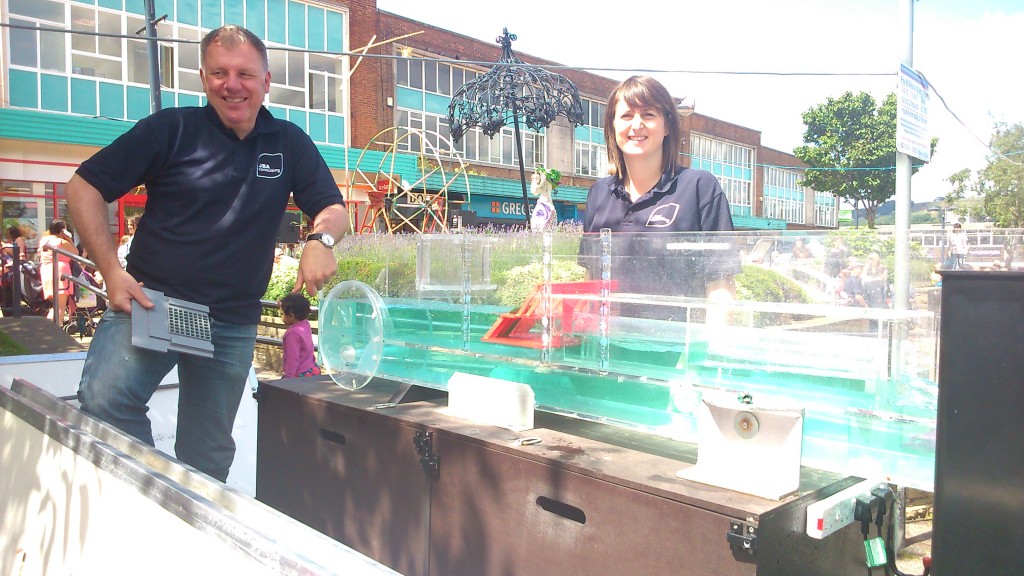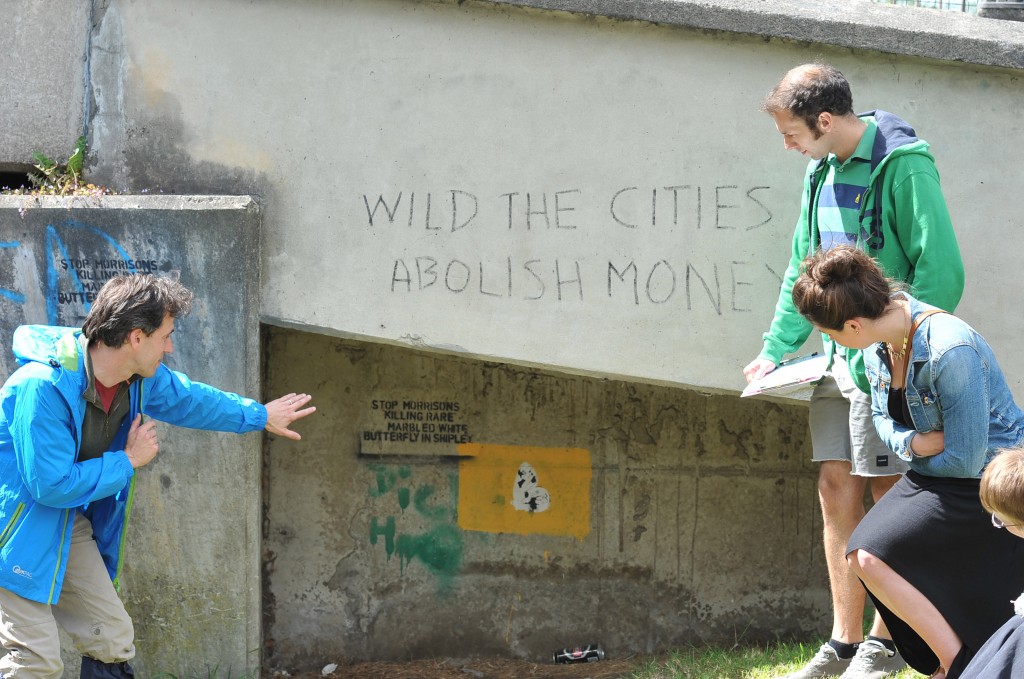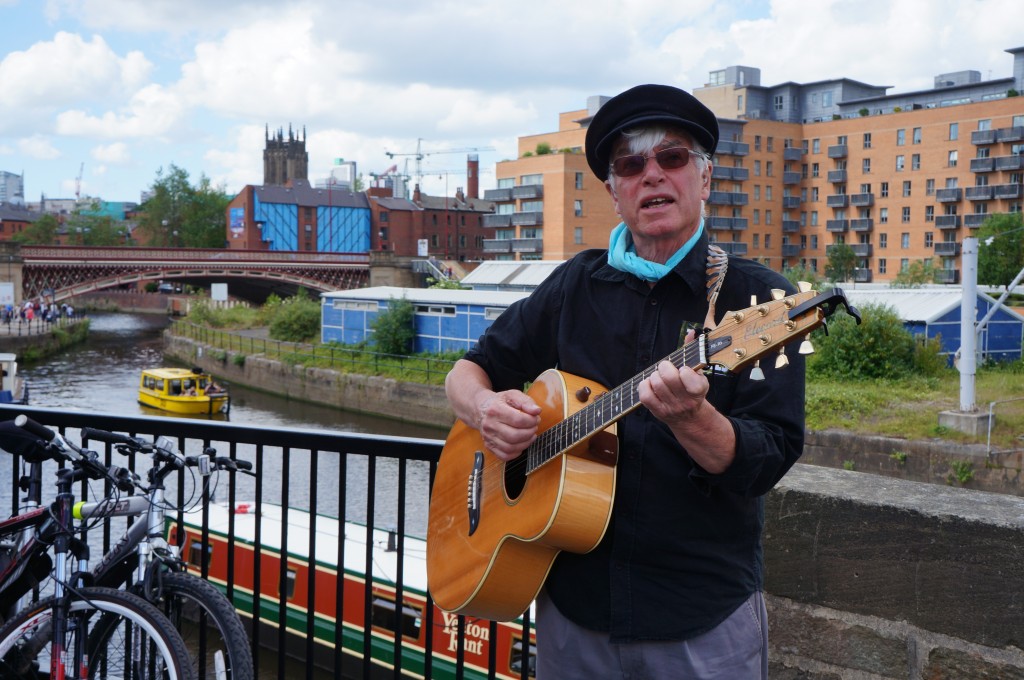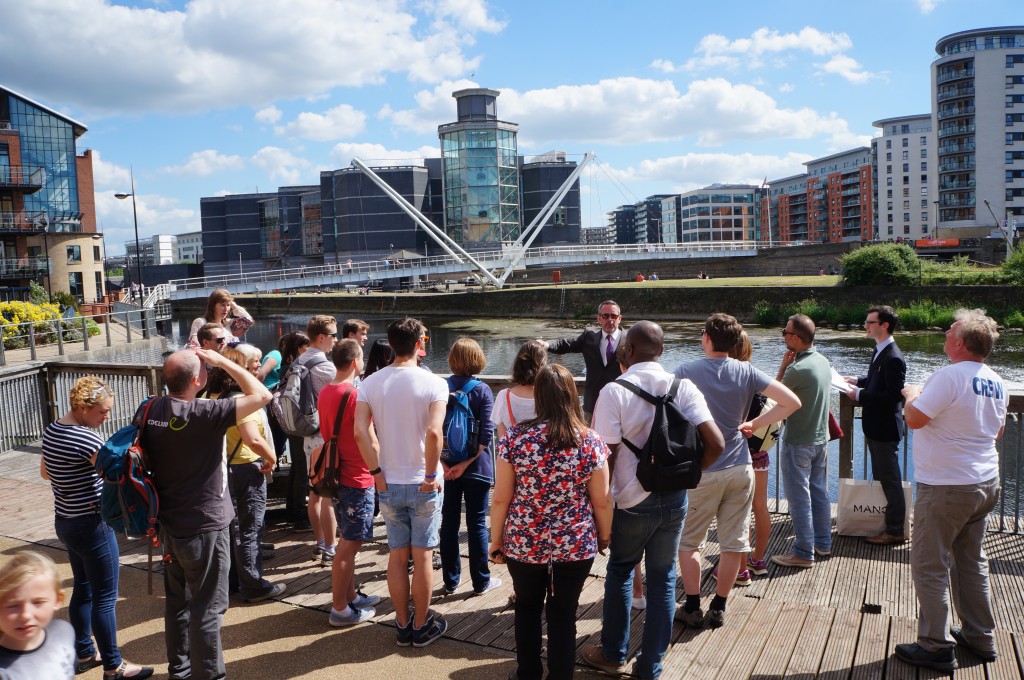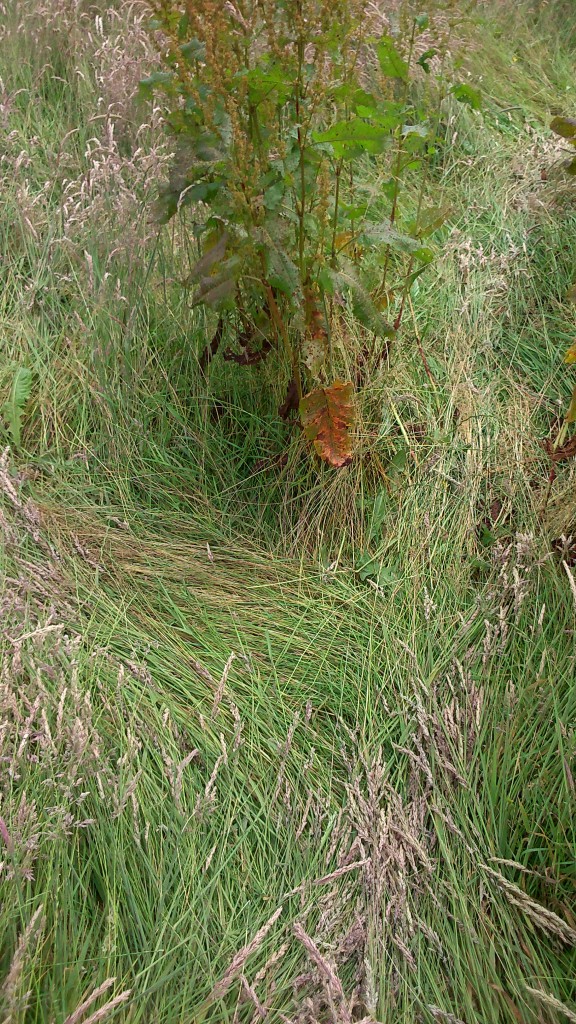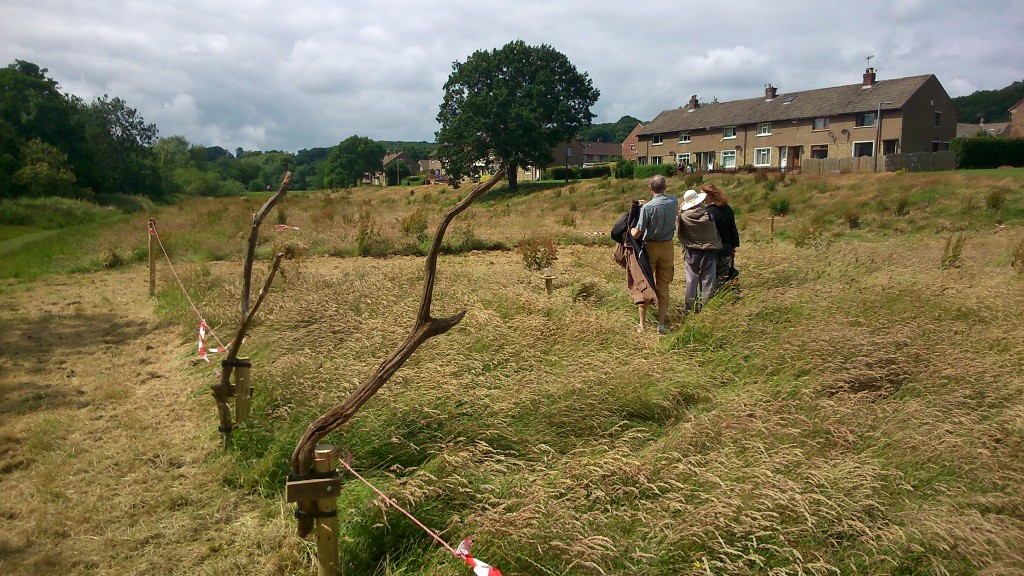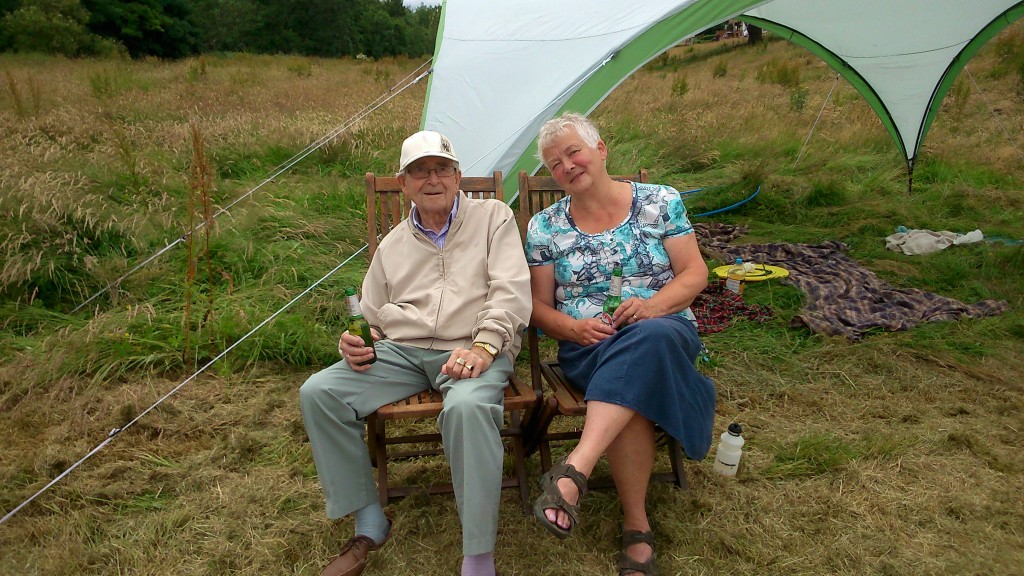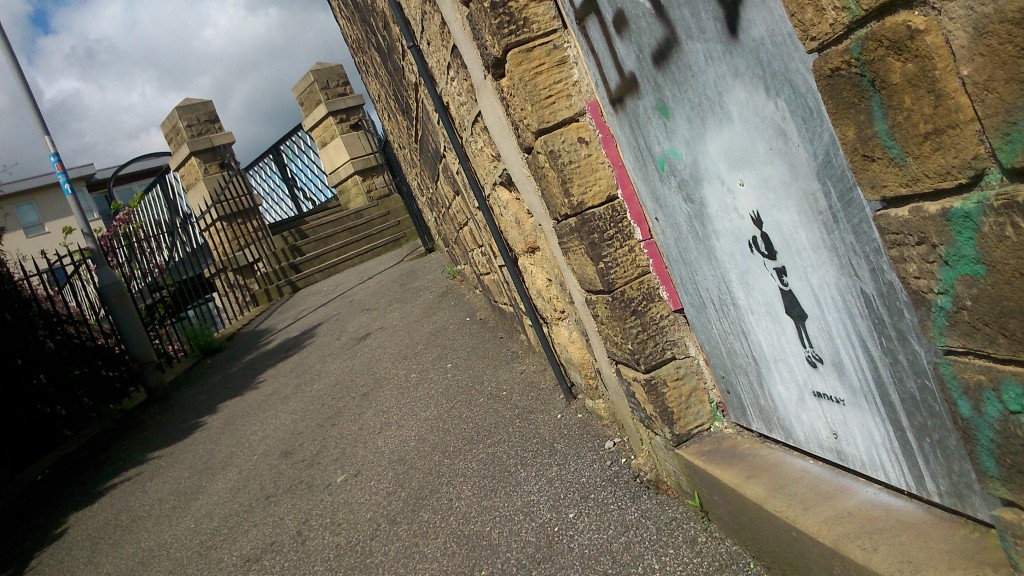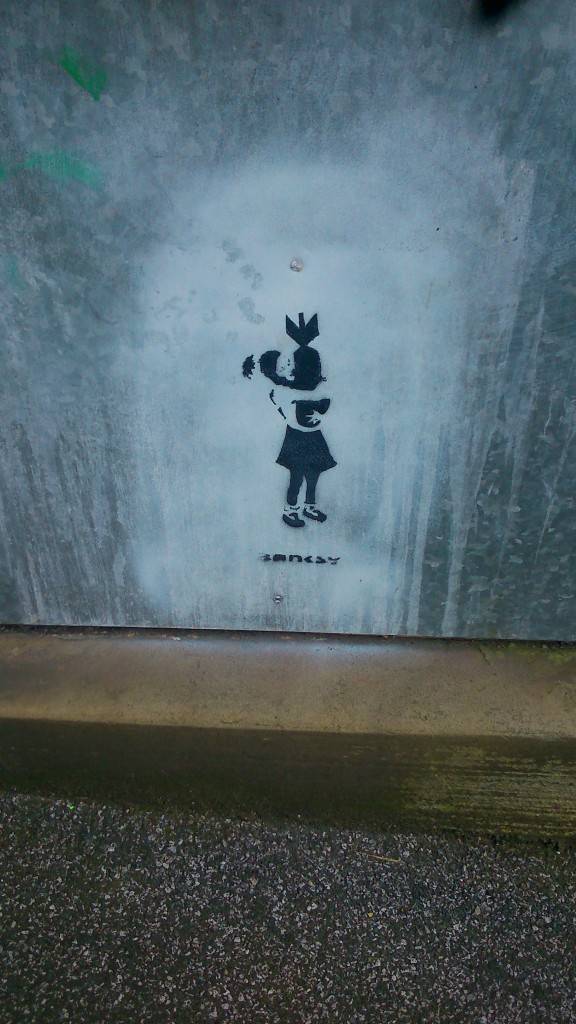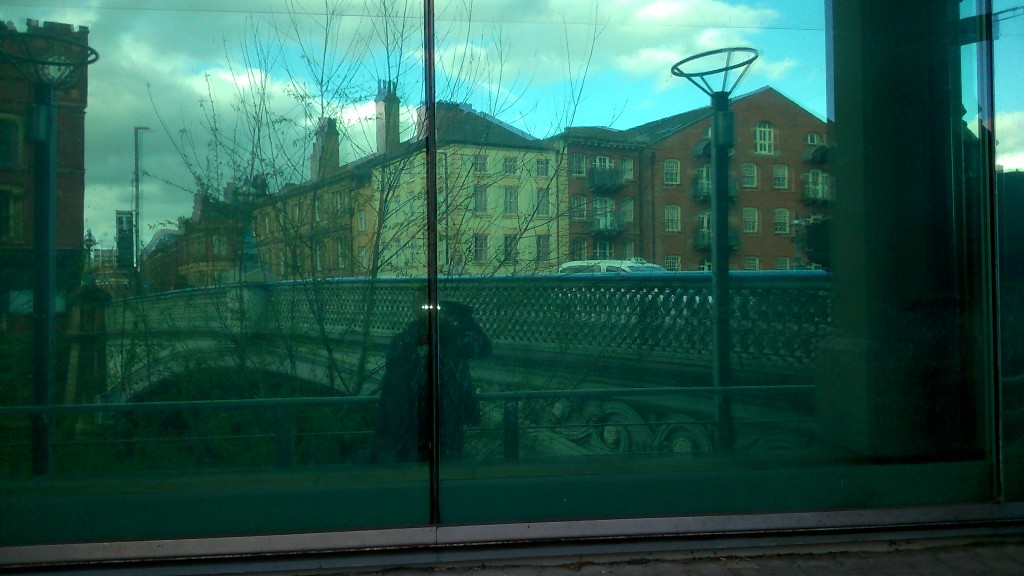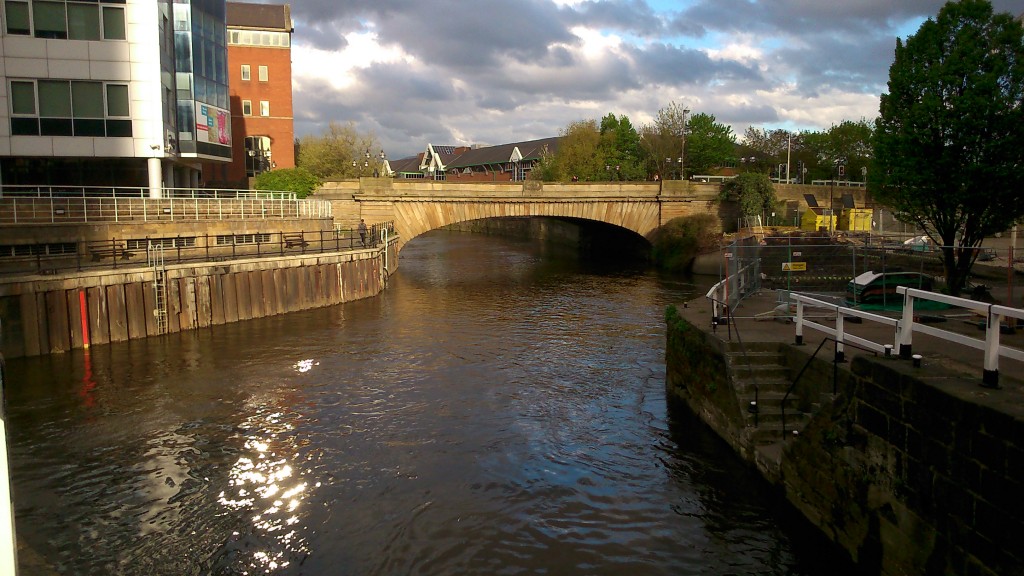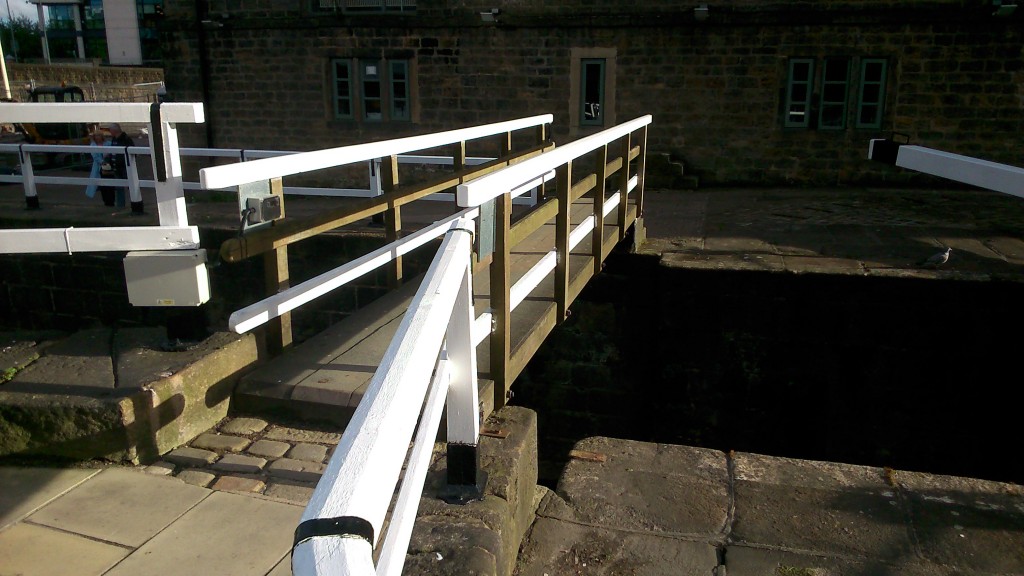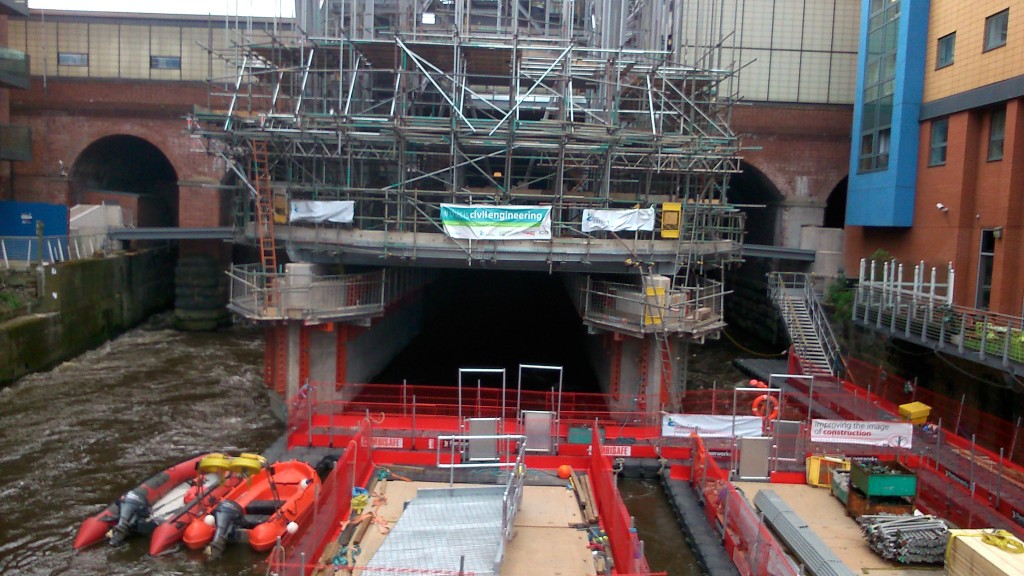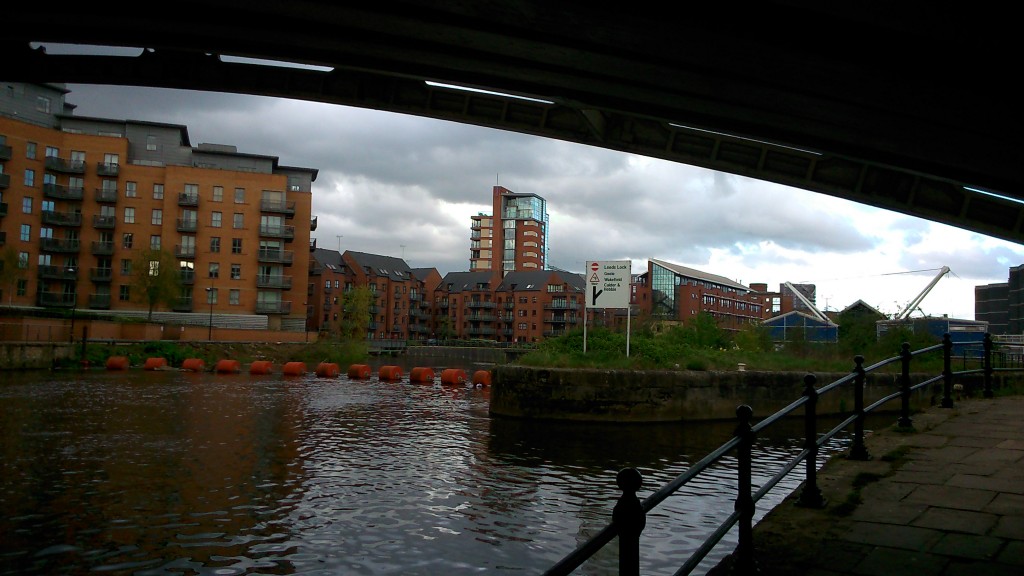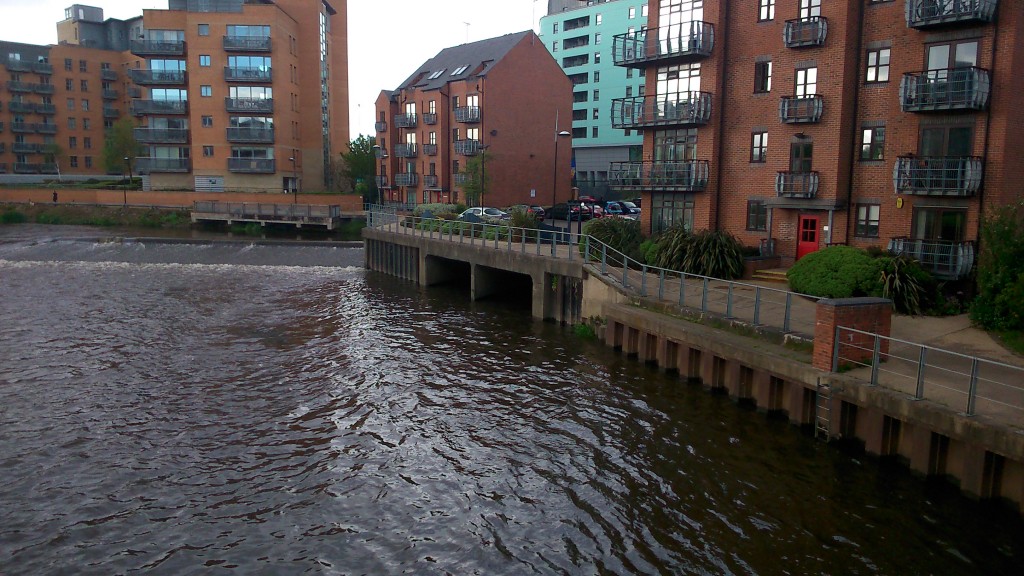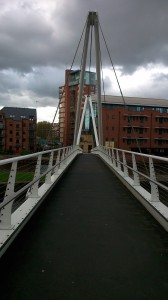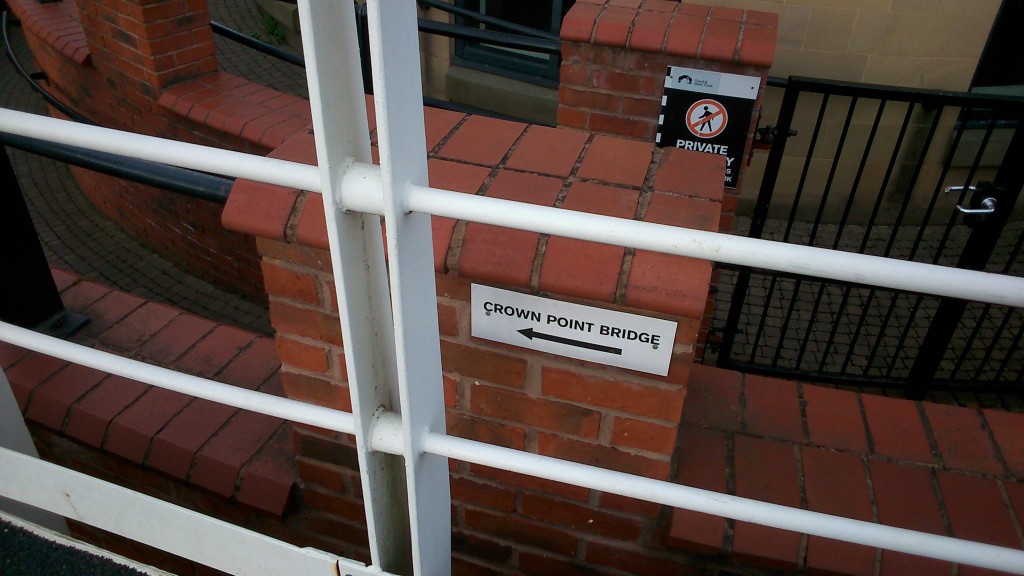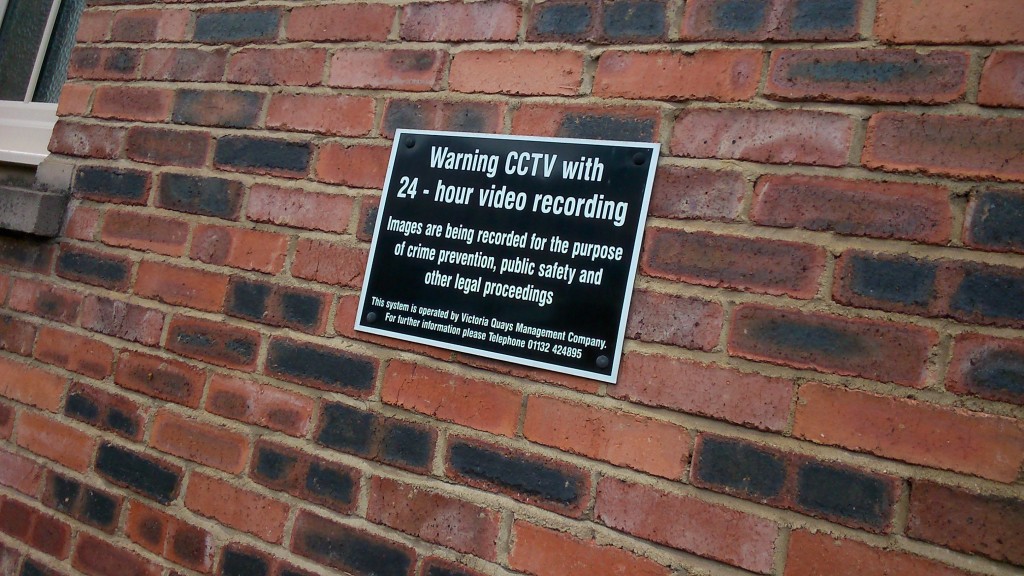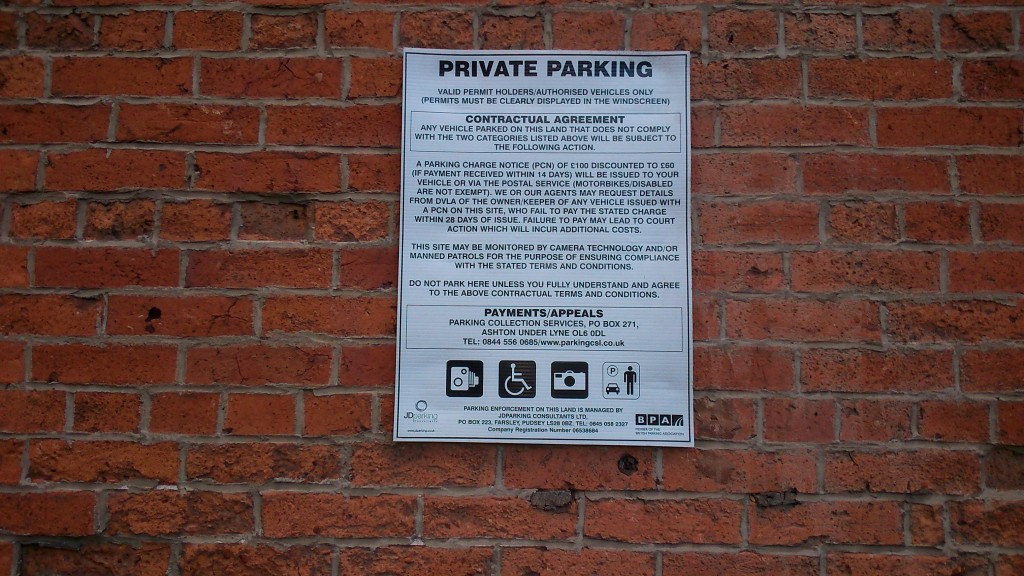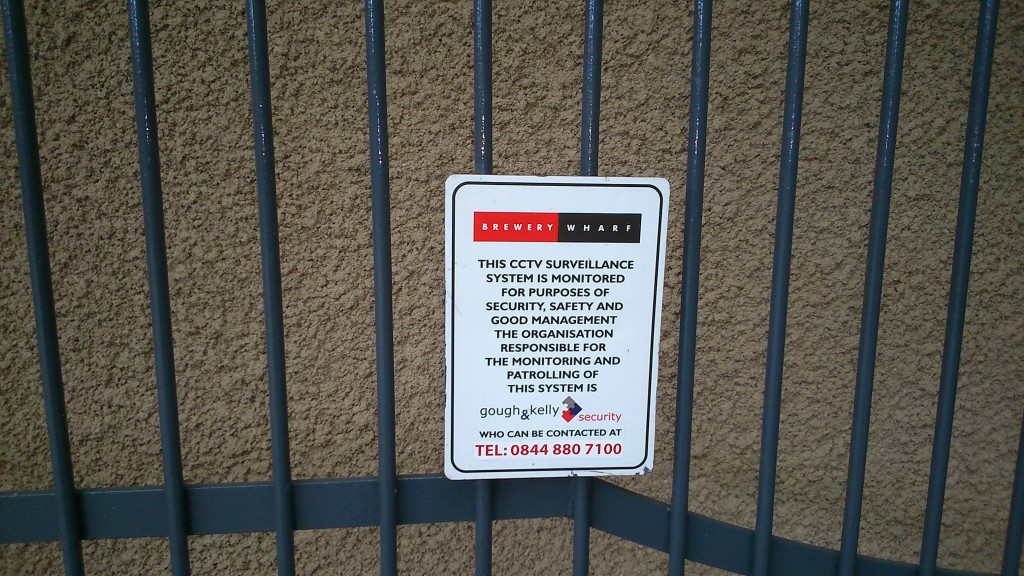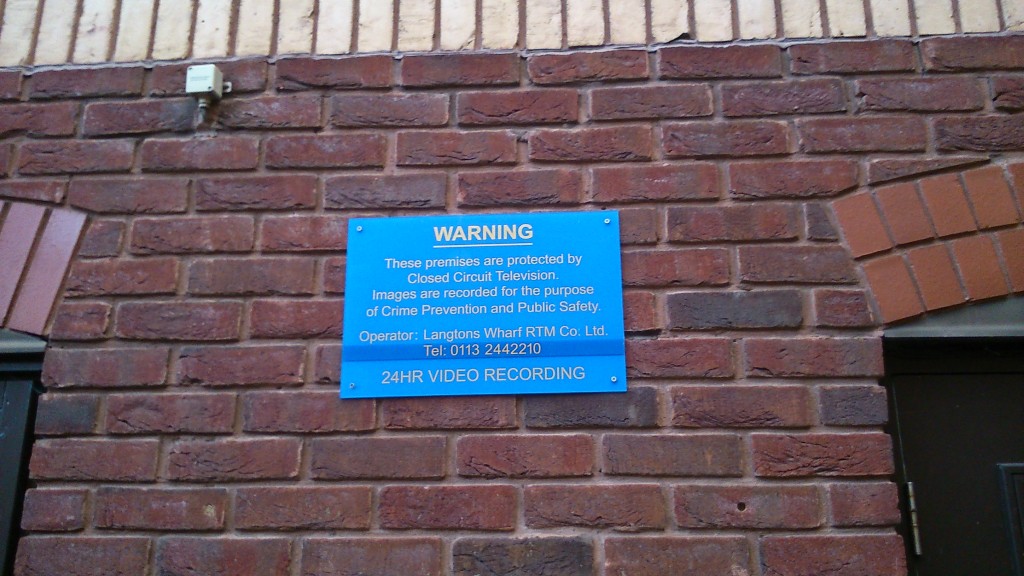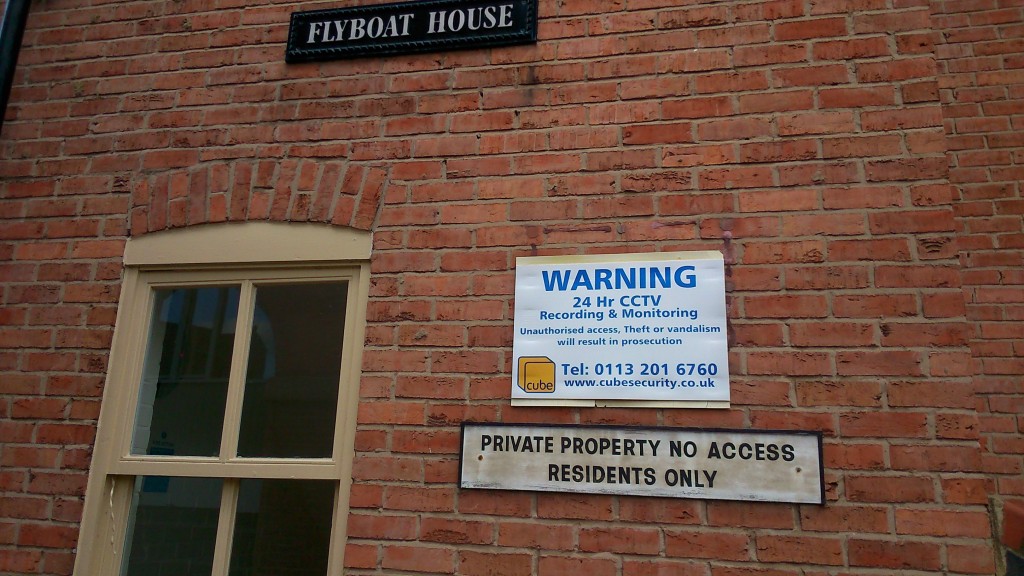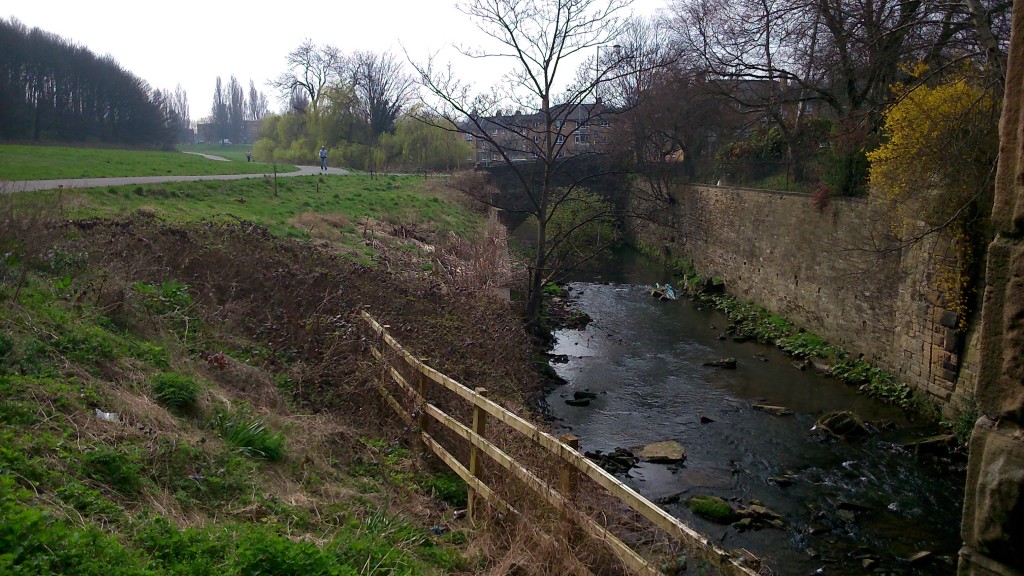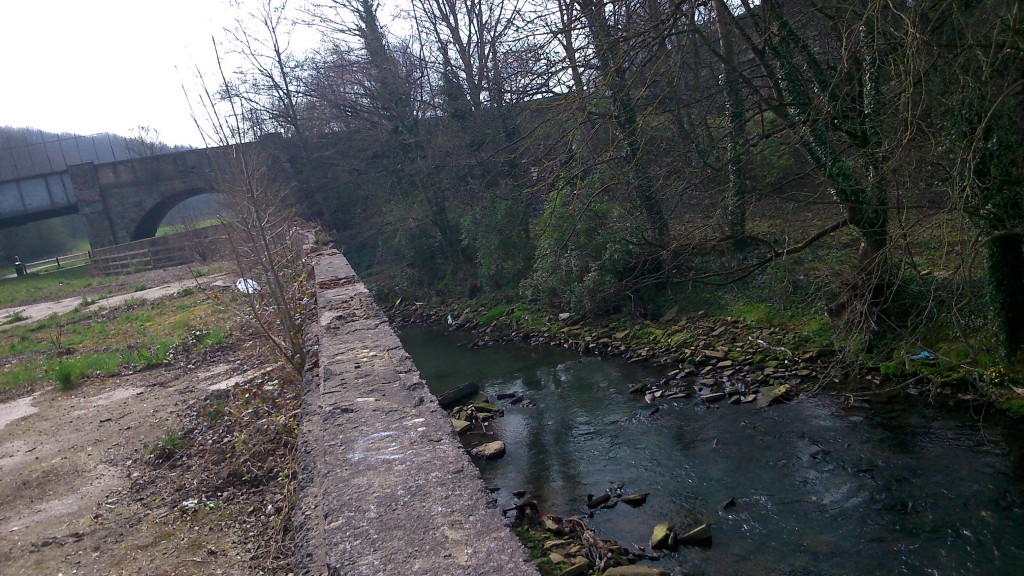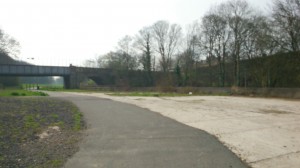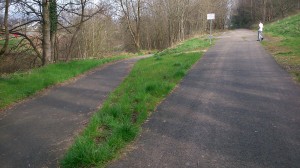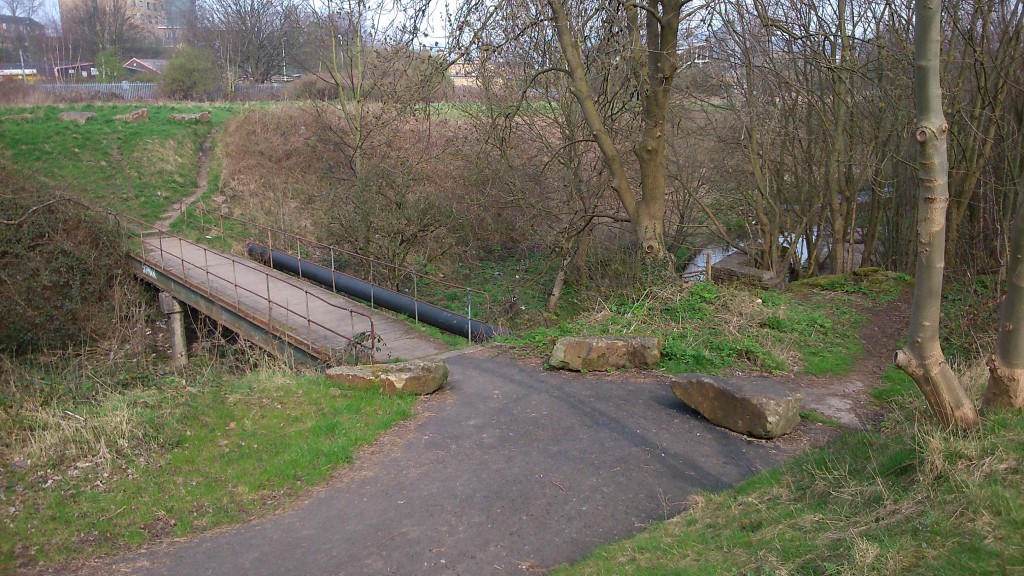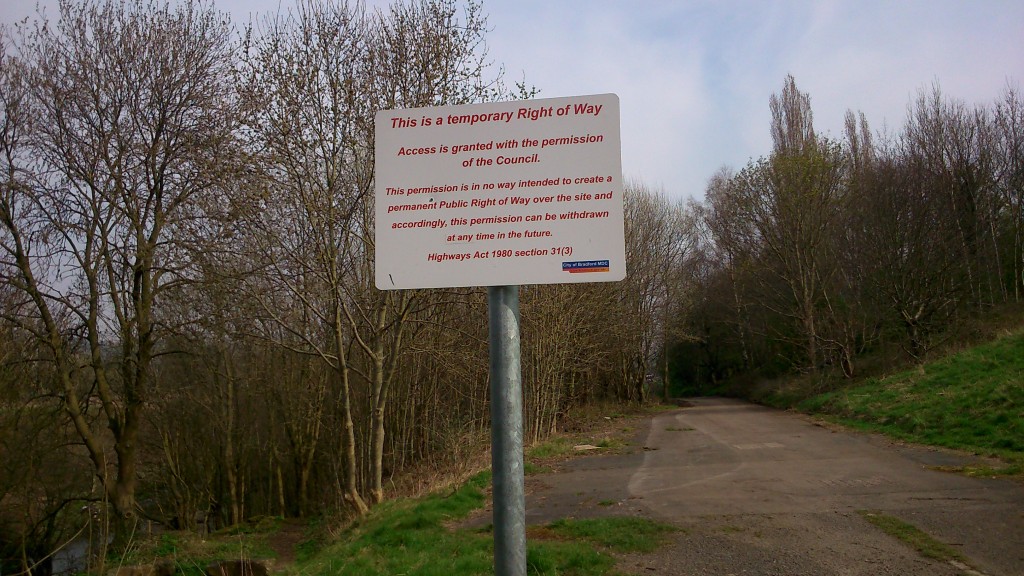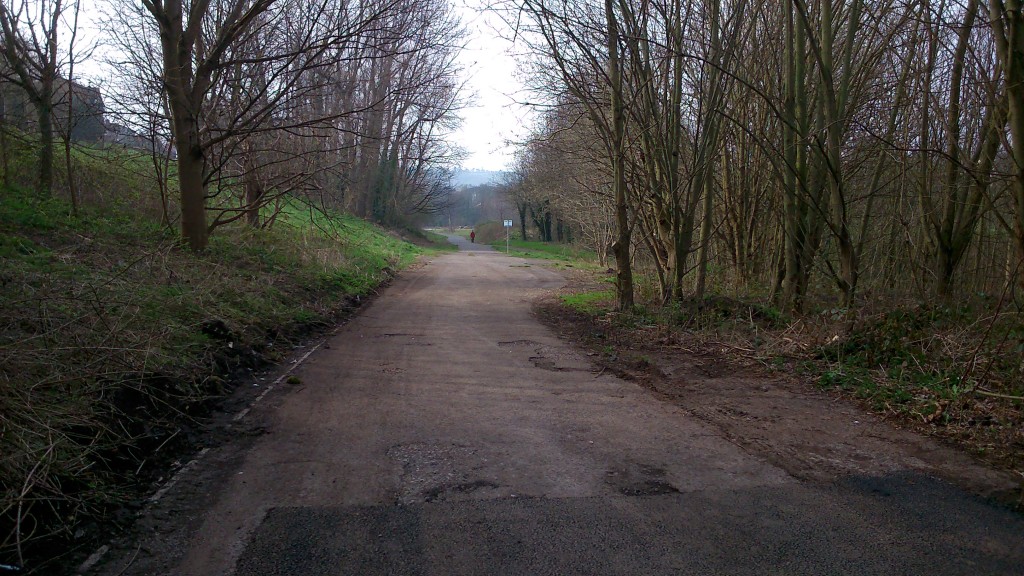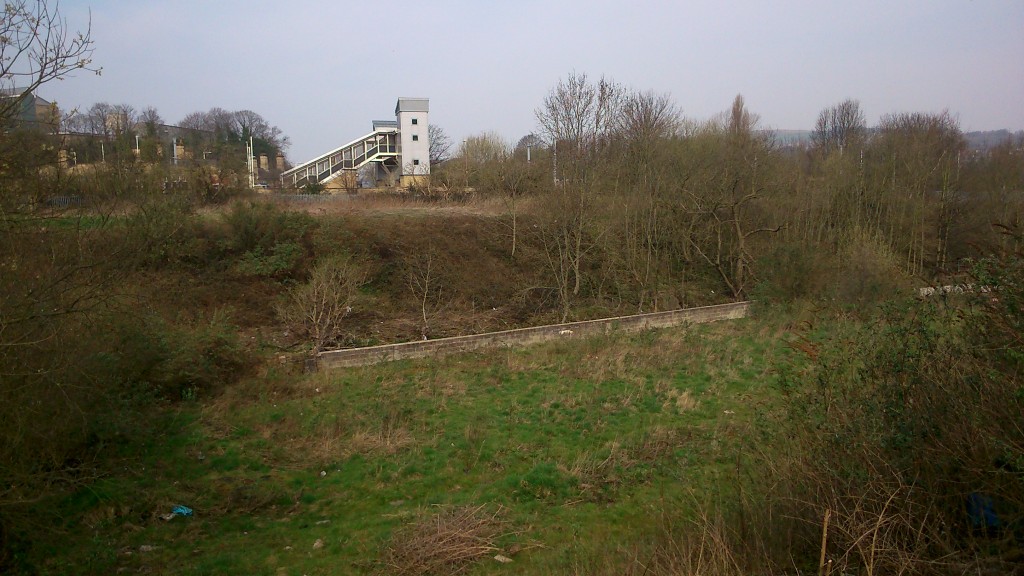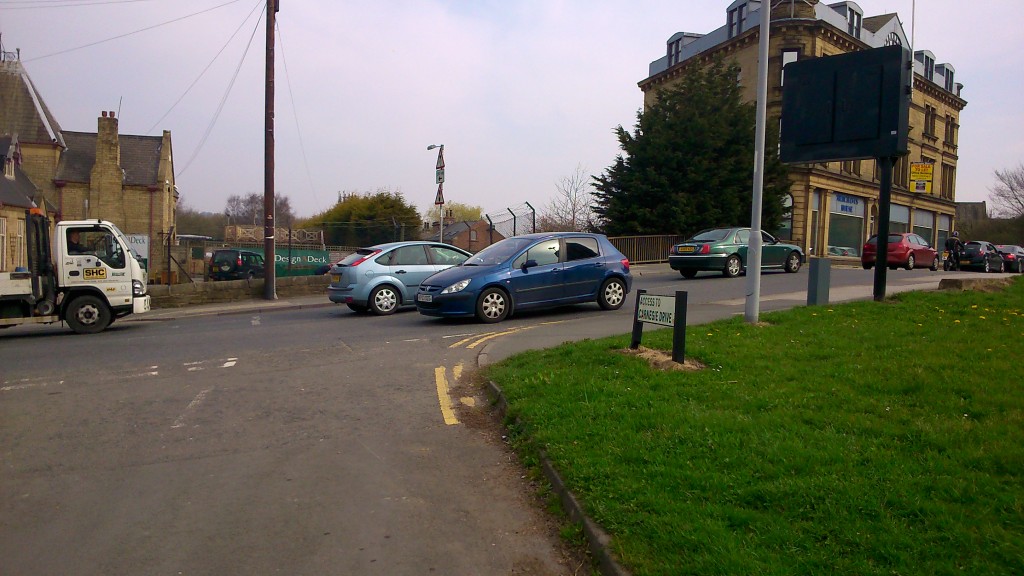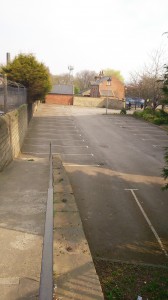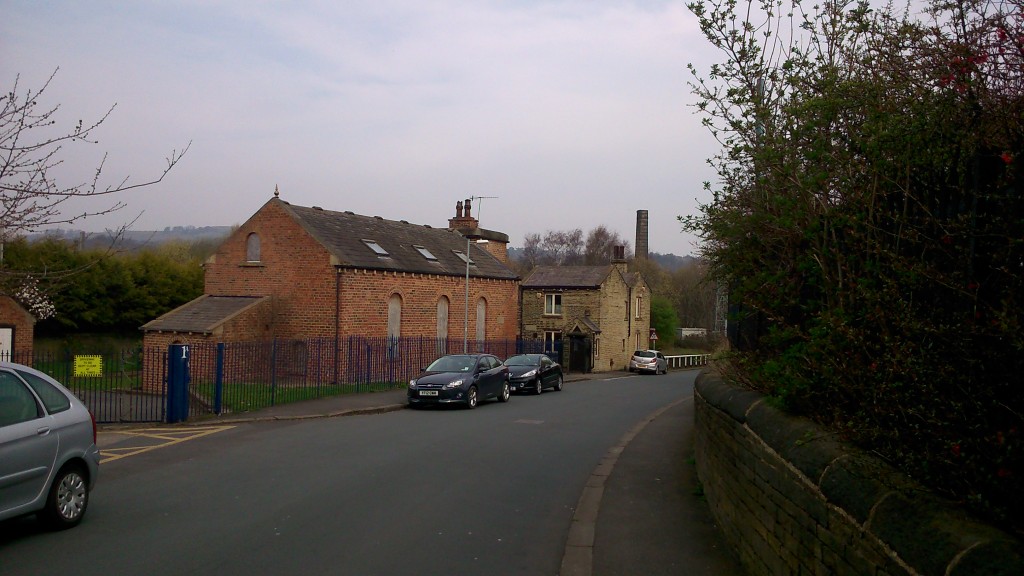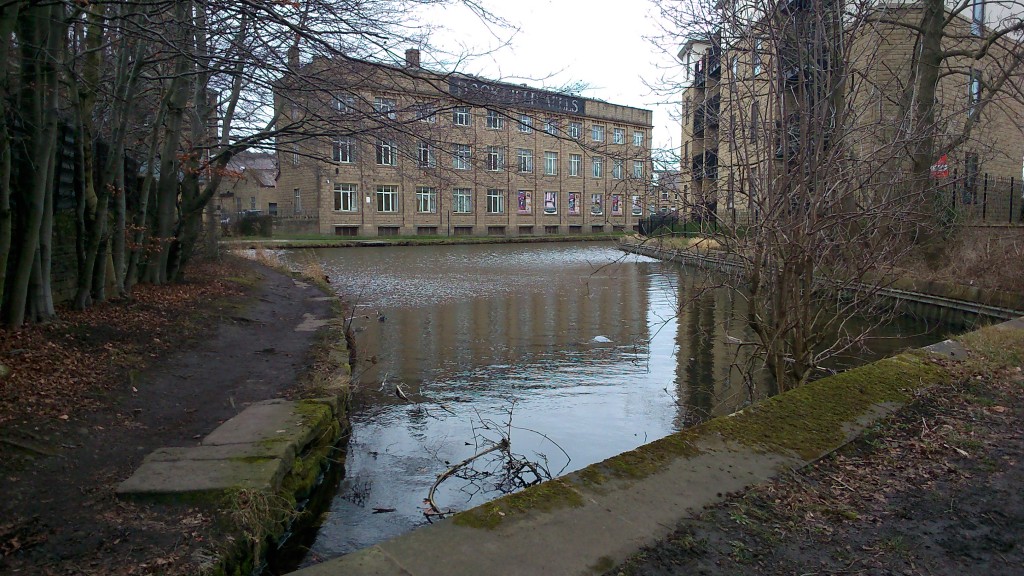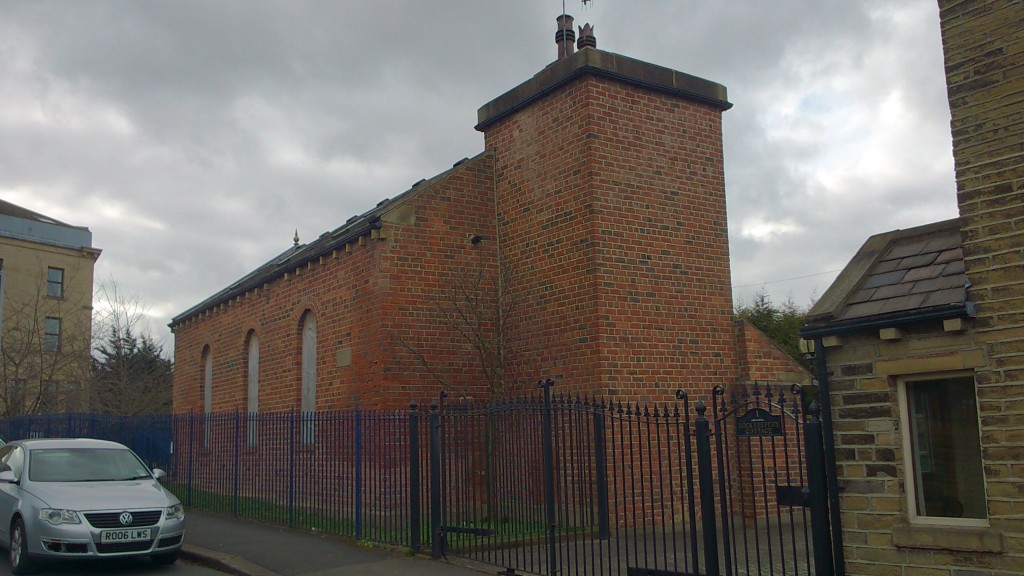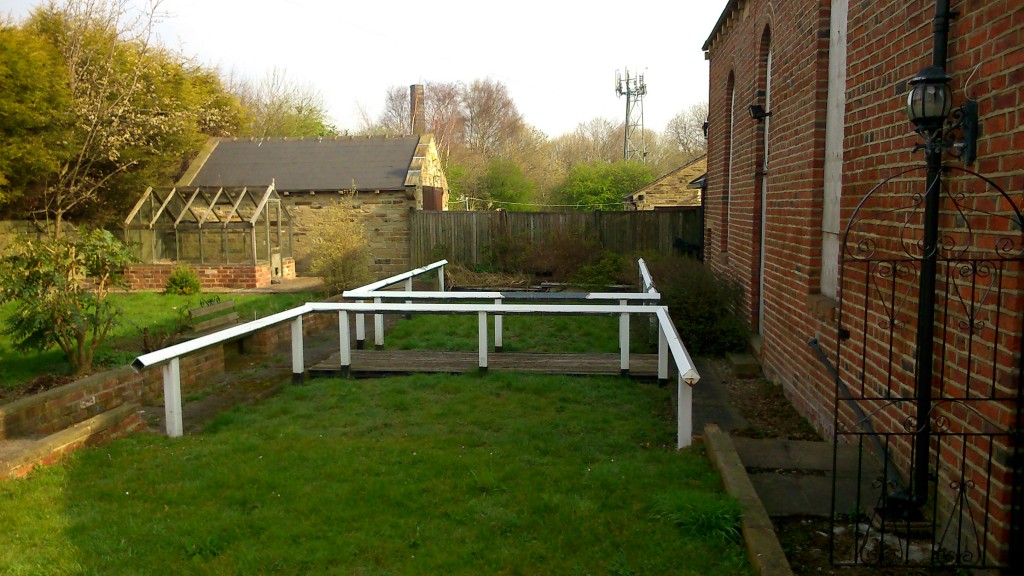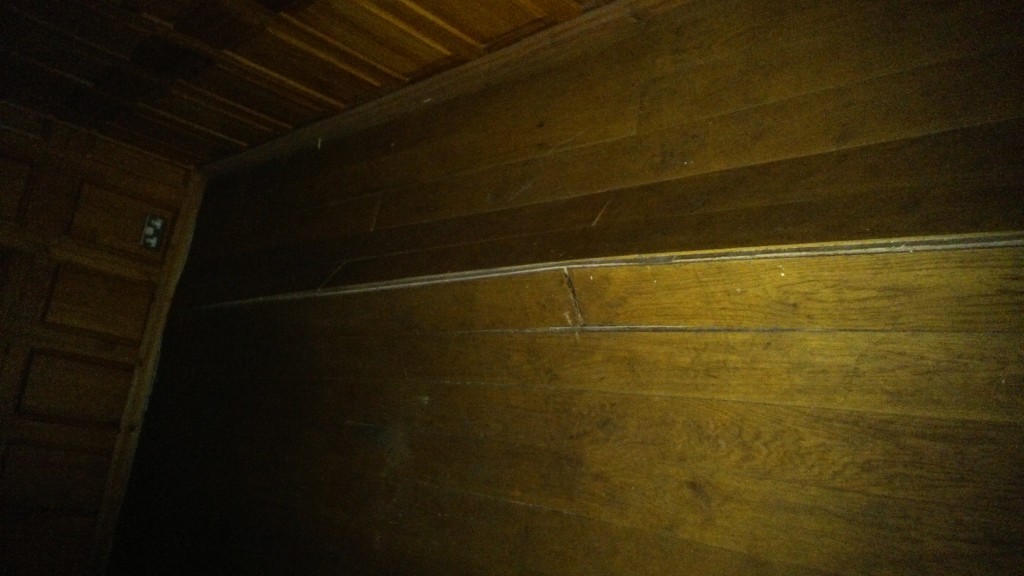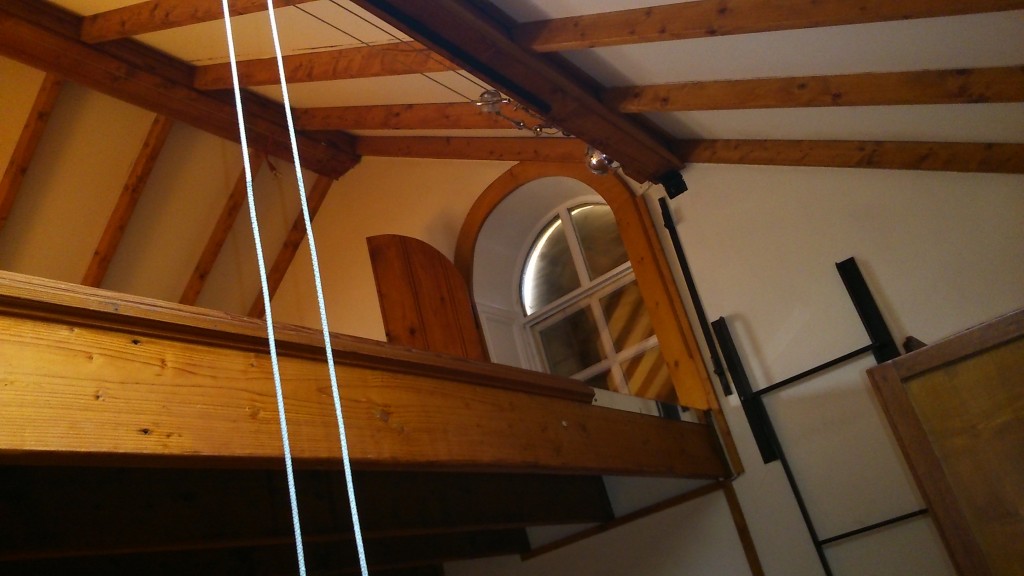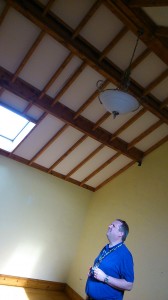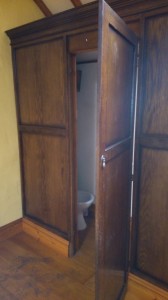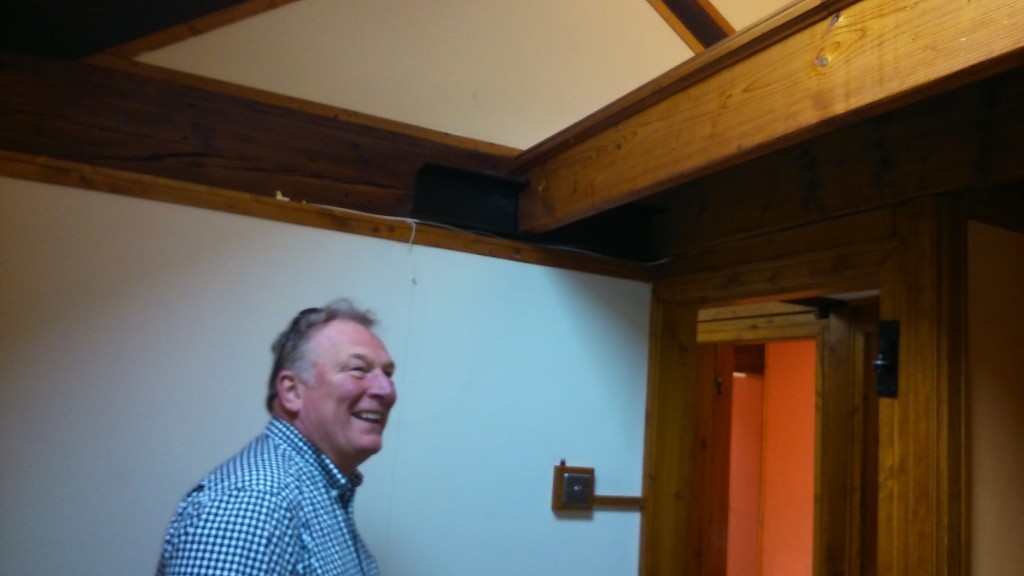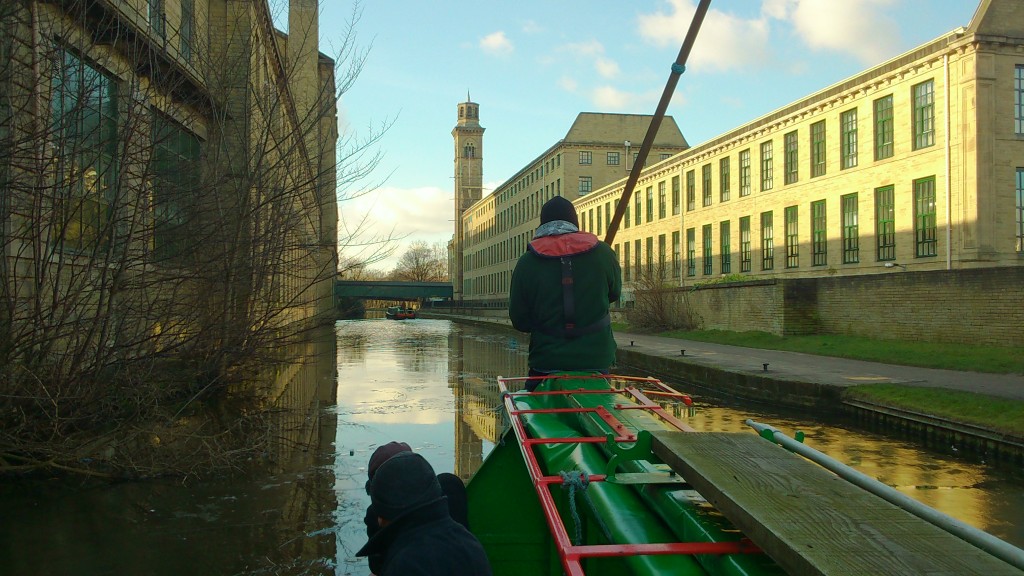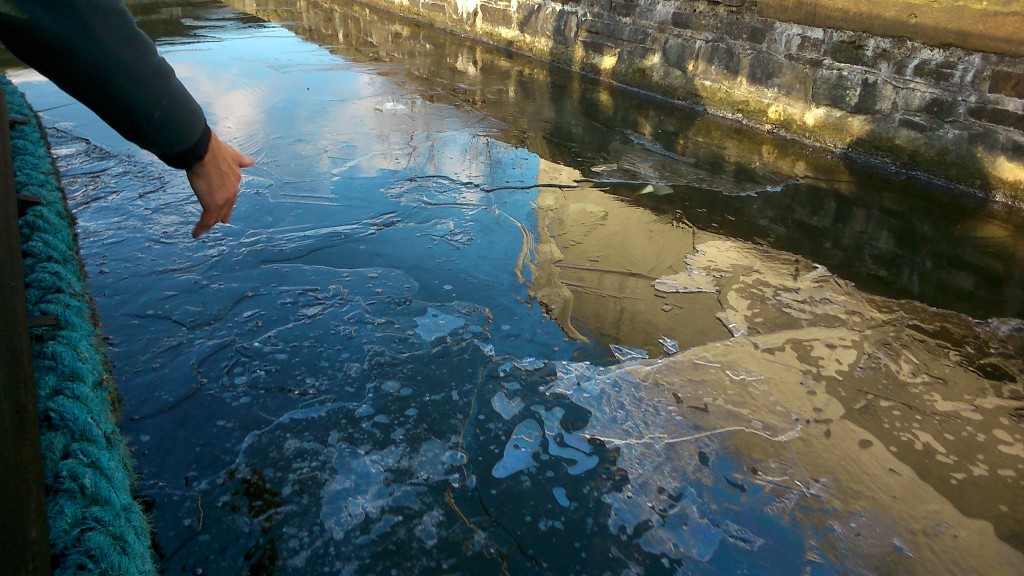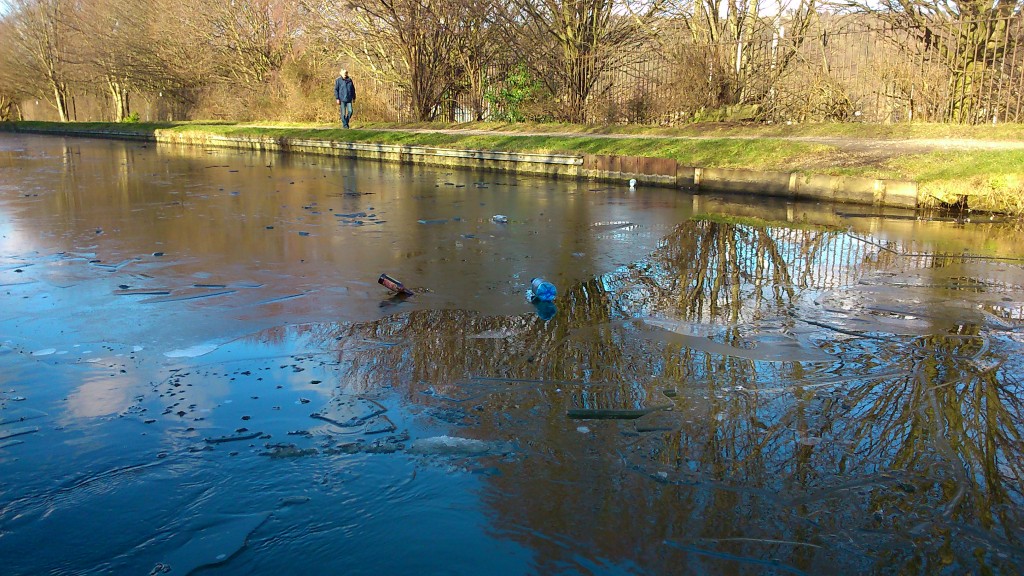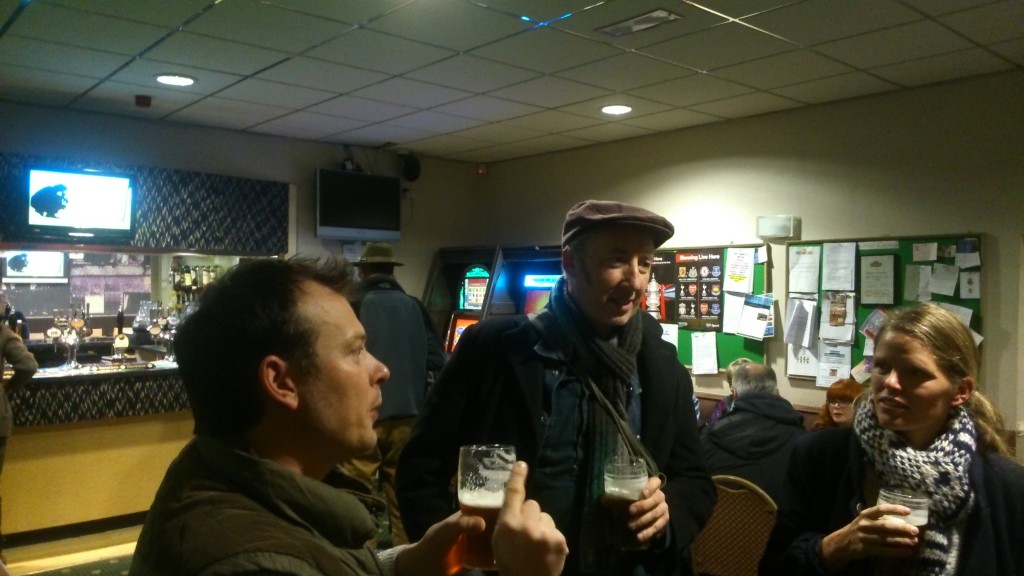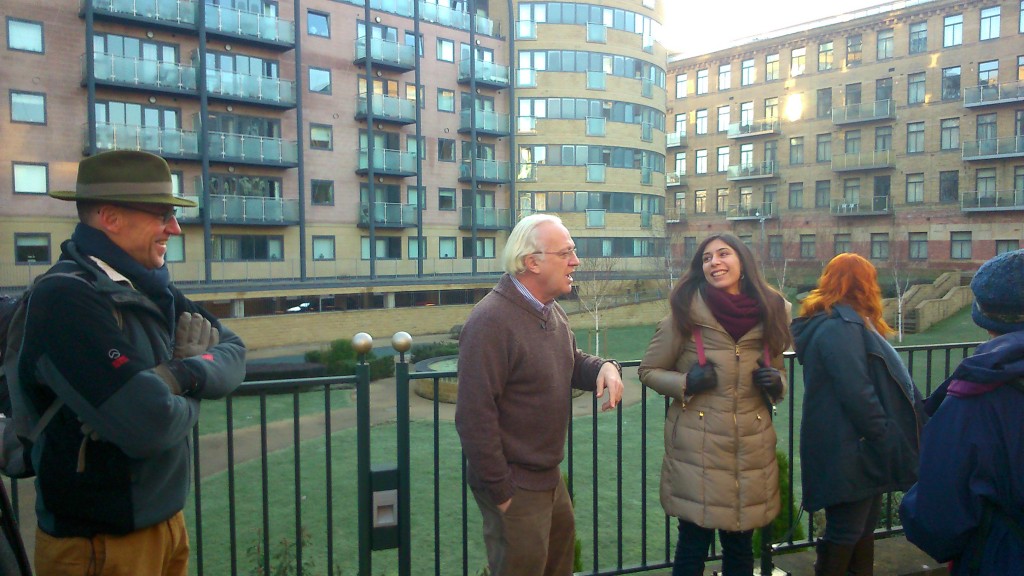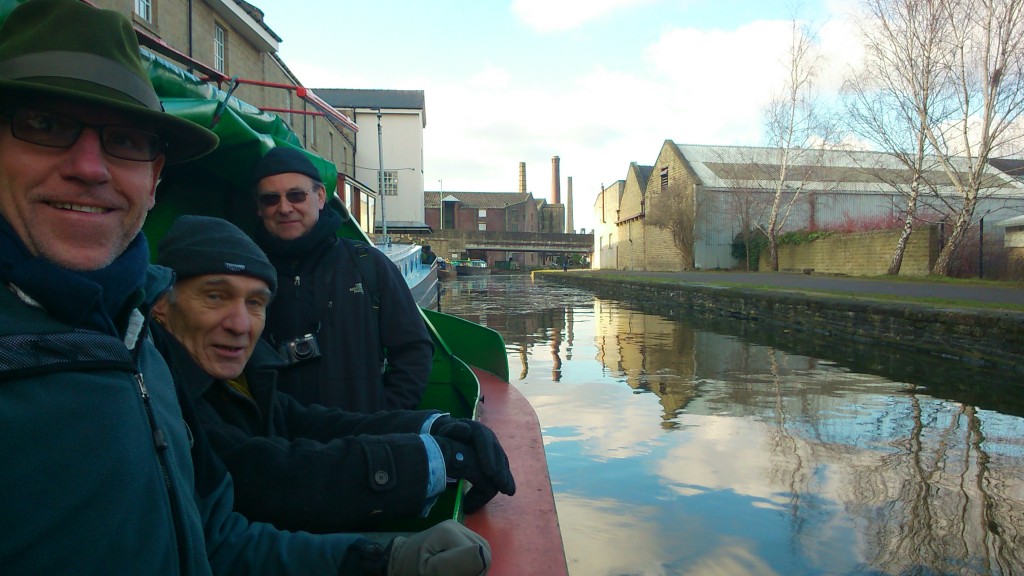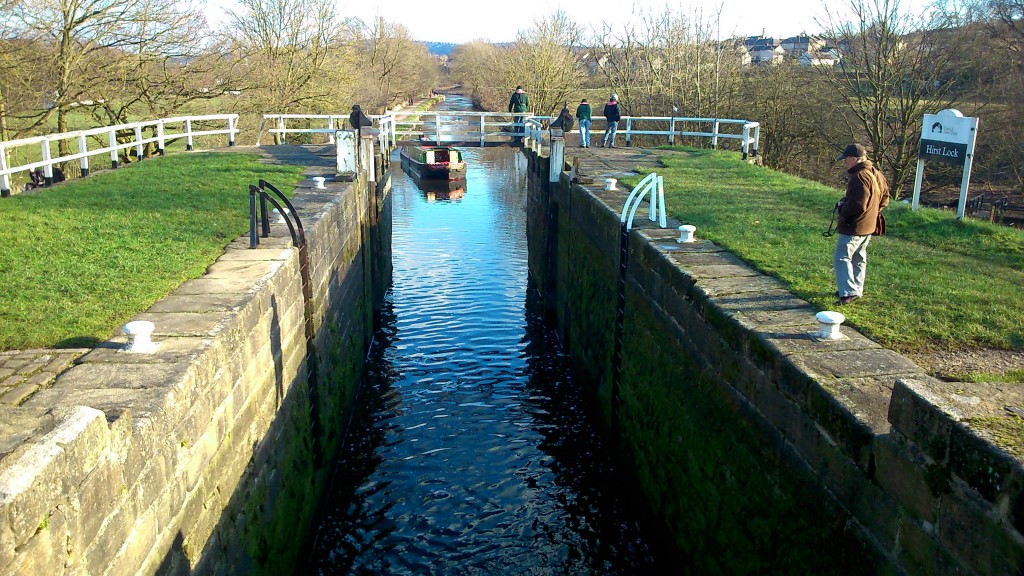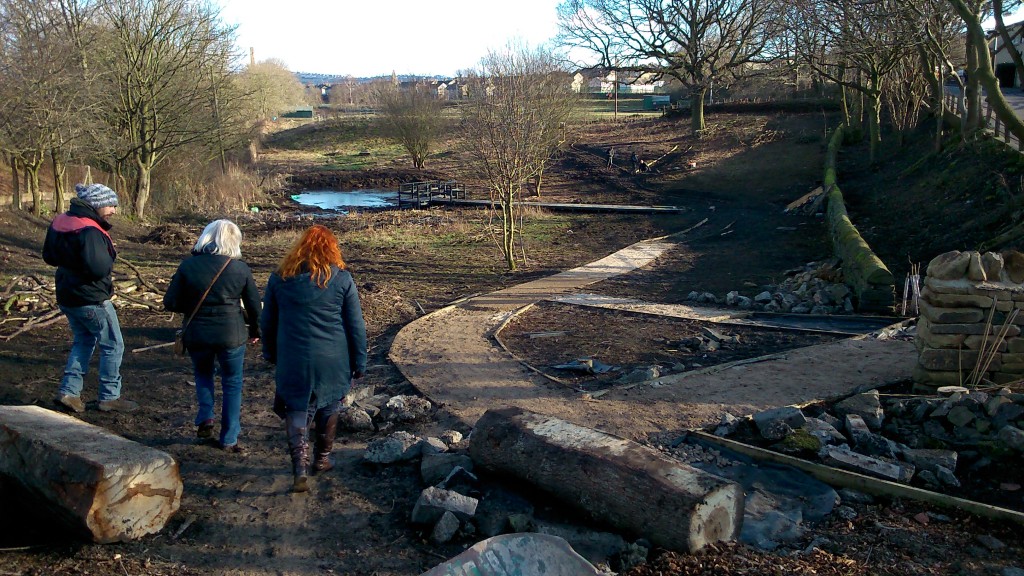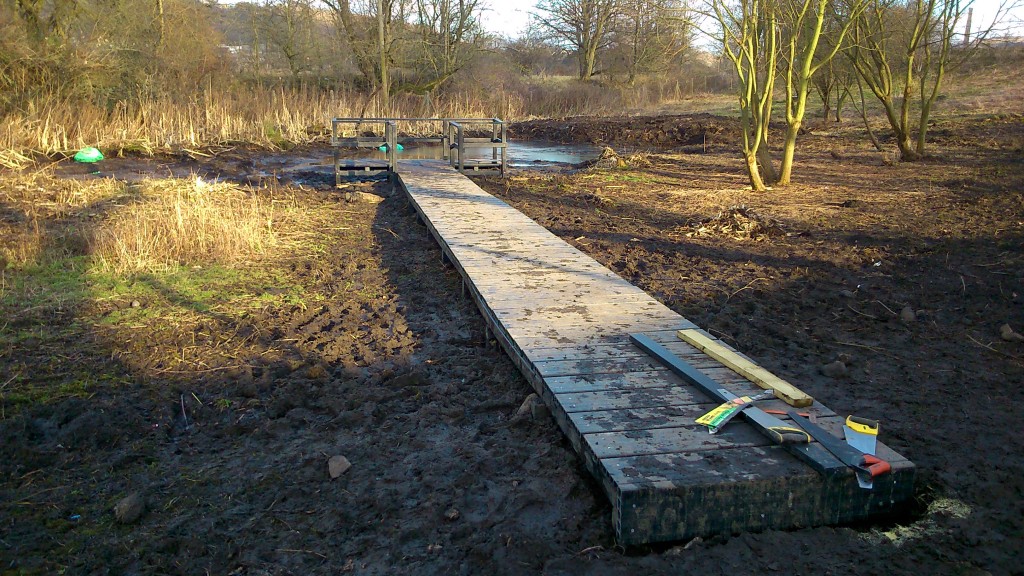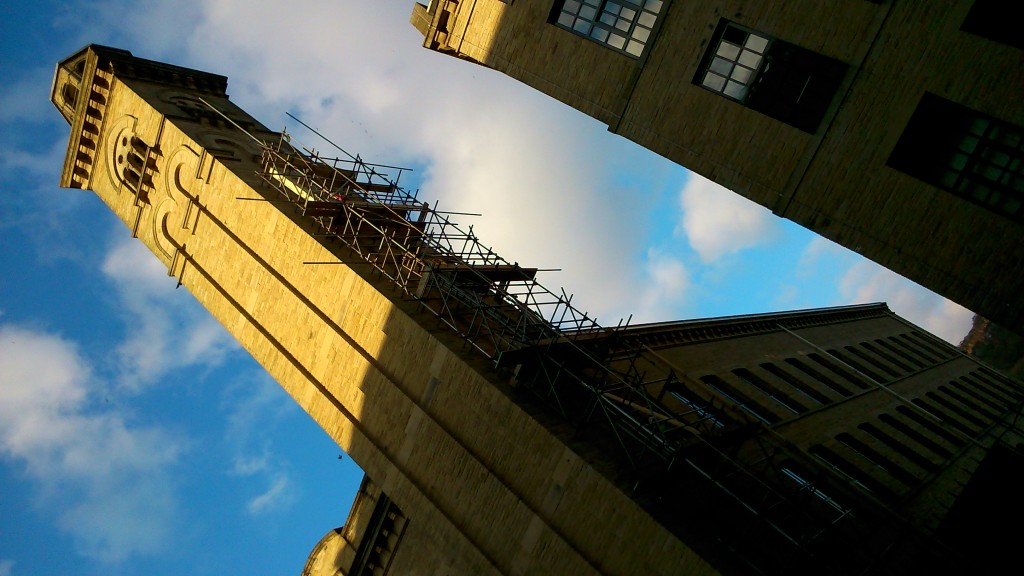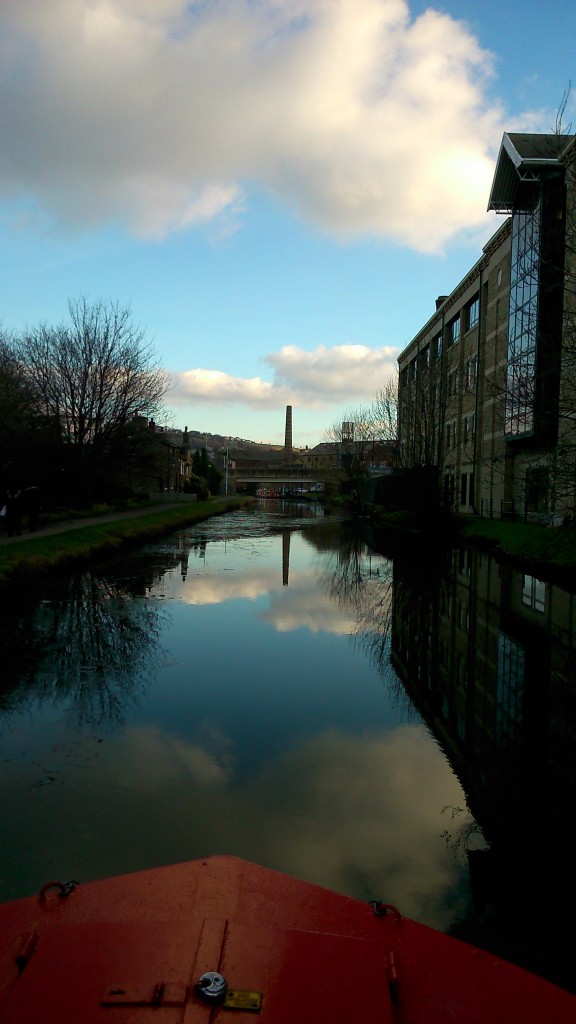The Multi-Story Water team have had an extremely busy few weeks, so this blog has got a little behind with updates… We’ve had two big weekends — this last one, July 11th-12th (of which more shortly), and a fortnight before that, June 26th-28th, we were involved with two simultaneous water-themed festivals — in Shipley and downstream in Leeds.
The Shipley Street Arts Festival, co-ordinated by our friends at Q20 Theatre on Dockfield Road, was an ambitious attempt to combine traditional street entertainments in Shipley’s town square (jugglers, stiltwalkers, and the like) with a thematic emphasis on the town’s rivers and canal… So a second ‘hub site’ for the festival was down on the canal towpath beside the Ibis Hotel. Here’s what it looked like with the big letters SHIPLEY on display…
Multi-Story Water was involved in various aspects of the festival — for example, there was a successful screening of our short film Wading to Shipley at the Ibis on the Sunday, and we’d also arranged with JBA Trust (based at Salts Mill) to display their water flume in the town square… It demonstrates different forms of water flow, when you place different kinds of constructions or obstacles in a channel. On one level quite technical, it’s actually really interesting to watch, and there was a lot of curiuos interest from passers-by…
Our main contribution to the festival, though, was an interactive performance piece called Seven Bridges, which used the Ibis as its starting point. Spectators (participants, is probably a better word) toured themselves east along the canal towpath towards Dockfields in groups of 4 or 5, and along the way they were given some game-like challenges to complete. They also would encounter various performers. Here’s David Smith, for example, as a heritage tour guide from three hundred years in the future (2315), dressed as an ordinary canal buff from 2015 (geddit?), and pontificating about the significance of the “art” (aka graffiti) on Otley Road Bridge:
And here’s Lynsey Jones, as a Victorian lock-keeper’s wife (who did all the work opening the locks…), talking to spectators on Junction Bridge…
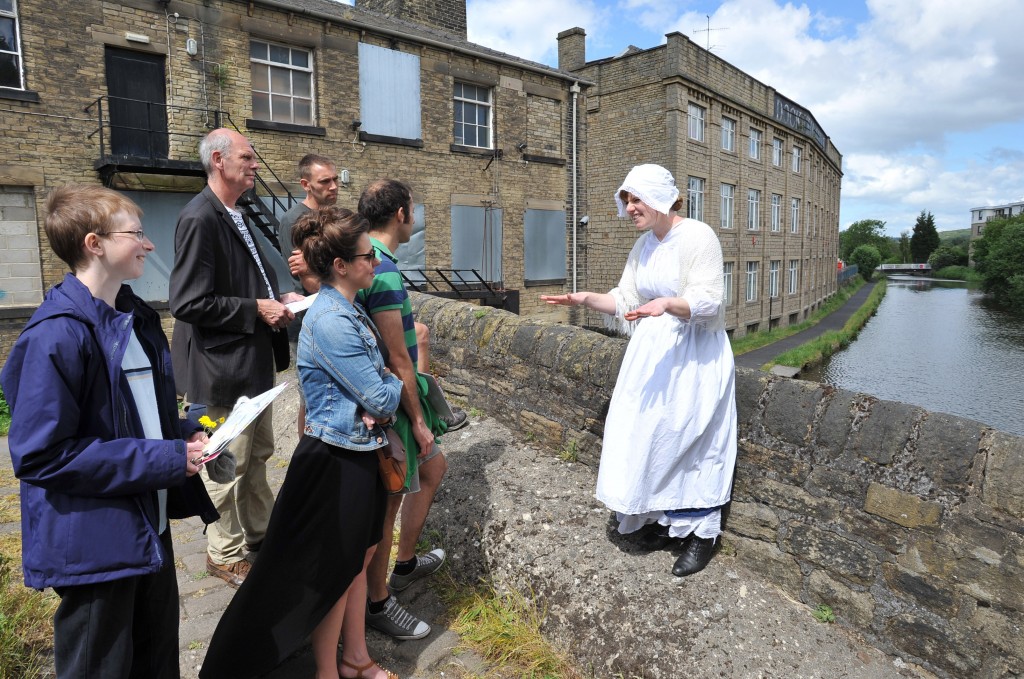 Participants would make their way as far as the old Bradford Canal pumphouse, on Dock Lane, where they would share what they had gathered en route, before returning the way they had come, accompanied by the performers…
Participants would make their way as far as the old Bradford Canal pumphouse, on Dock Lane, where they would share what they had gathered en route, before returning the way they had come, accompanied by the performers…
There’s more pictures and documentation of Seven Bridges (Shipley) if you look under the “Performances” tab on our menu bar… But for now, let’s turn our attention to its partner piece, Seven Bridges (Leeds), which we presented on the same dates at the Leeds Waterfront Festival. The idea was to “bridge” the two festival locations, upstream and downstream, if only conceptually… Obviously the Leeds version was on a bigger scale, with bigger bridges, and this one took the form of a guided tour rather than a self-led journey… Here’s musician Eddie Lawler (on a day out from his home in Saltaire) kicking the piece off at Clarence Dock (with Crown Point Bridge in the background) with an old canal song about the founding of the Aire and Calder Navigation, which turned Leeds into a “seaport town” in 1700…
But Eddie was just the “local colour” wheeled in to warm the crowd up by Don Freshwater (played by Steve Bottoms, below in the suit)… Don is a both little sinister and a little nuts… he claims to be the CEO of something called the “Leeds Re-Development Corporation”… As Don explains below (in front of Knights Way Bridge and Clarence Dock on the far side) the audience has been gathered as “consultants” to help decide how to redevelop the waterfront… The “ordinary people of Leeds” were never consulted in the past about these matters, so Don wants to consult them now… except that he doesn’t really, because he likes the sound of his own voice too much.
Again, there’s more photos and more detail on this slightly barmy performance (with a serious edge to it) if you look under the “Performances” tab above. Both versions of Seven Bridges were very well received, and pointed us in some interesting directions for future work.
But in the interests of catching up with ourselves, let’s turn our attention now to this last weekend, spent in the flood plain meadow between the River Aire and the Higher Coach Road estate, west of Roberts Park (is it Saltaire, Shipley, Baildon..? you decide – there’s a case for all three). Preparations for the weekend began, in fact, a week earlier, when we sledgehammered a series of fence posts into the field in a rectangular pattern…
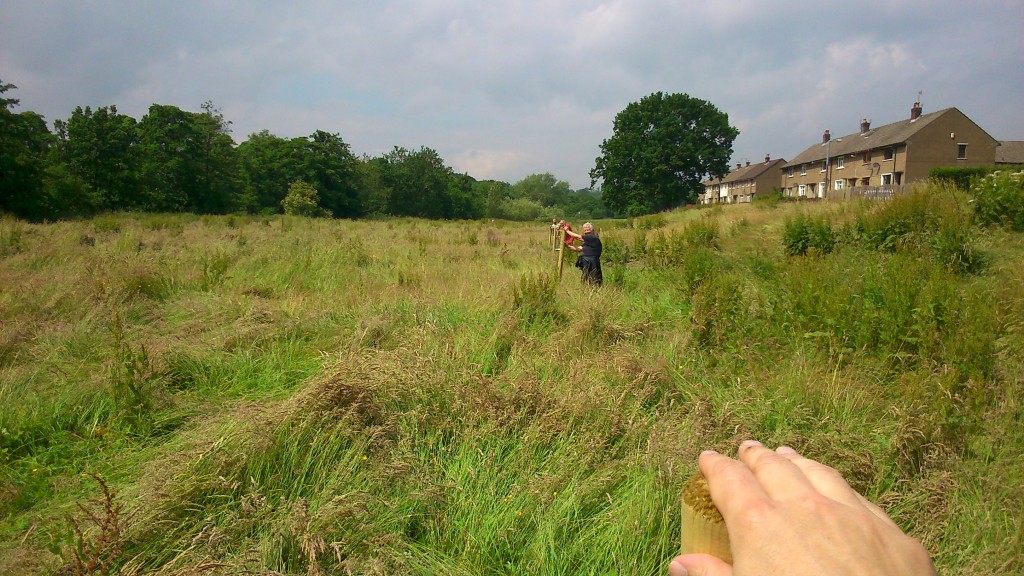
Three fenceposts in a row… that’s Steve’s hand in the foreground, Pat Gledhill with the second one, and Matt Blakeley with the third, obscured by Pat because our line was so straight! (well…)
Notice how much longer the grass is than even last month (see previous post, “Meadow Madness”, where it’s much shorter and greener, with more buttercups visible). Basically Bradford Council have said that – with austerity cuts and the resulting loss of manpower and mowers – they will not cut the grass in this field as often as they used to. They did, however, oblige us by at least sparing the time to cut a swathe around our staked-out rectangle, so that by this last weekend, it looked like this:
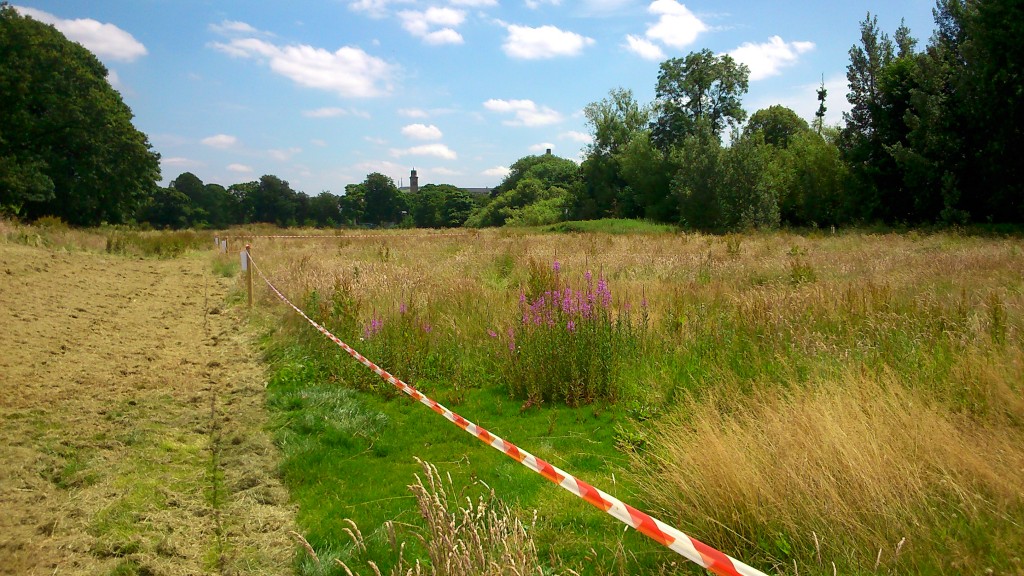 On Saturday afternoon (July 11th), in the cleared area on the outside of the staked-out rectangle, we held a community barbecue for residents on the estate – with conversation, games for the kids, etc…
On Saturday afternoon (July 11th), in the cleared area on the outside of the staked-out rectangle, we held a community barbecue for residents on the estate – with conversation, games for the kids, etc…
This was part of our ongoing engagement with residents here, as we (and our colleagues at Kirkgate Centre) work with them on developing some plans for this riverside field… People would like to see a proper footpath, for instance, and other improvements, but the main focus today was the grass… Some residents, understandably, think it’s a disgrace that the grass has been left to grow this long — they feel it looks scruffy, and embarrasses the neighbourhood, and want us to pass on their anger about this to the Council. Others, though (perhaps a majority of those we spoke to this weekend?) seem to think that, if this is to be a meadow in future, then perhaps something more could be made of it — by planting colourful wildflowers, for example, and cutting at least some areas so that it all looks a bit more intentional and a bit less scruffy…
In an attempt to help focus this discussion, by drawing attention to what long grass is actually composed of up close, we created “A Meadow Meander” within the fenced off area. This is a mazy walk created by treading the grass down into a carefully planned set of looping pathways… So for example, in the picture below, you can make out a “Y” junction, where the “lie” of the grass could take you in one of two directions.
As this picture also starts to suggest, left to their own devices, there are a LOT of different kinds of grasses and other plants growing in the field, and they merit some close up attention… “A Meadow Meander” is the creation of artist Baz Kershaw, and his Earthrise Repair Shop. Baz has created similar installations in various other UK locations, and for this one he had placed a series of jars on small plinths, to be discovered as you move around the maze…
Each of the jars contains a secret to be puzzled out — just as the winding paths in the grass also follow a particular pattern that visitors are invited to guess at… Baz calls it an “open secret”, because if you’ve done the meander, he’ll happily tell you what the pattern represents… but sorry, if you’re just reading this blog, we’re not going to tell you! The only clue we’ll share is that it might have something to do with the way that long grass looks a little like waves when it is played with by the wind. The River Aire, alongside this meadow, is not the only reason why the meander was appropriate for “Multi-Story Water”…
 A Meadow Meander was presented both on the Saturday, along with the barbecue, and on the Sunday, when we put the entrance on the other side of the rectangle, right next to the riverside path. This meant that, where on Saturday it was mainly residents in the meander, on Sunday it was mainly passers-by — walking between Roberts Park and Hirst Wood. We wanted to get their ideas too, on the great meadow debate…
A Meadow Meander was presented both on the Saturday, along with the barbecue, and on the Sunday, when we put the entrance on the other side of the rectangle, right next to the riverside path. This meant that, where on Saturday it was mainly residents in the meander, on Sunday it was mainly passers-by — walking between Roberts Park and Hirst Wood. We wanted to get their ideas too, on the great meadow debate…
A big thankyou to everyone who made the events described happen… and especially — on the Higher Coach Road estate — a huge thanks to Sarah Muller and to Stewart and Pat Gledhill for so enthusiastically helping to create (and indeed dismantle) the meadow meander… The fence posts are at Stewart and Pat’s as I write, and we have some future plans in store for them…


